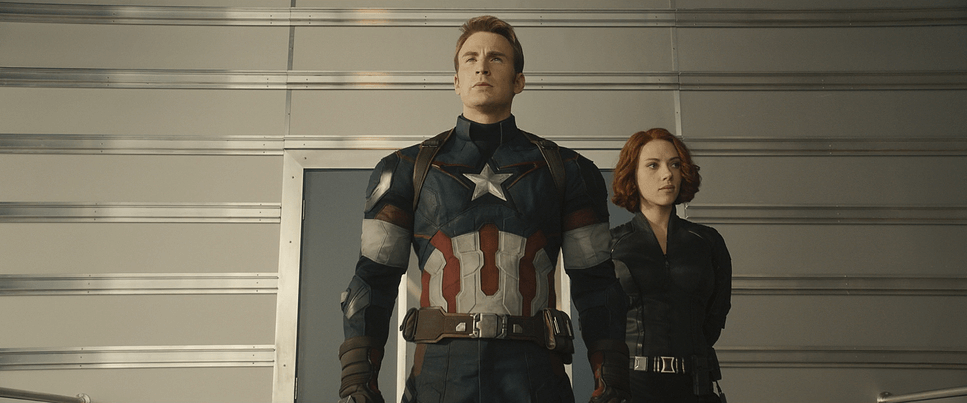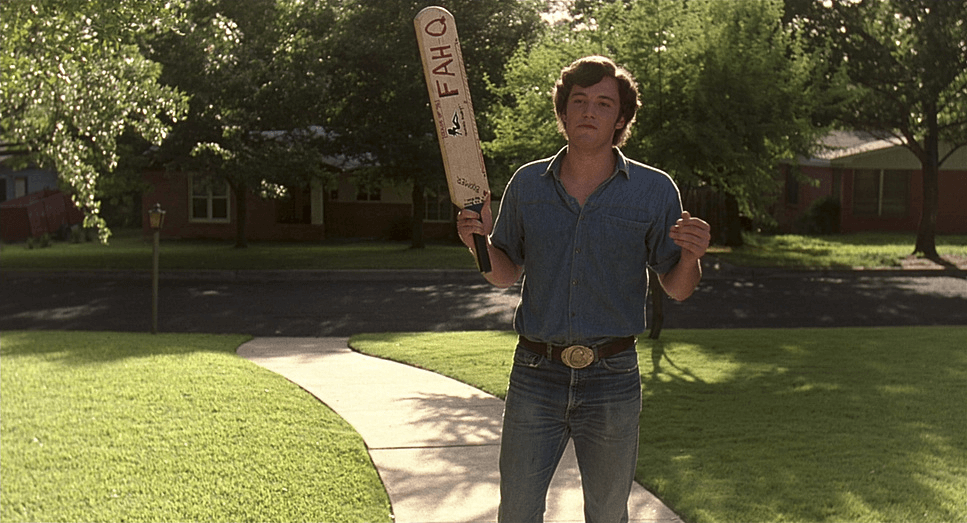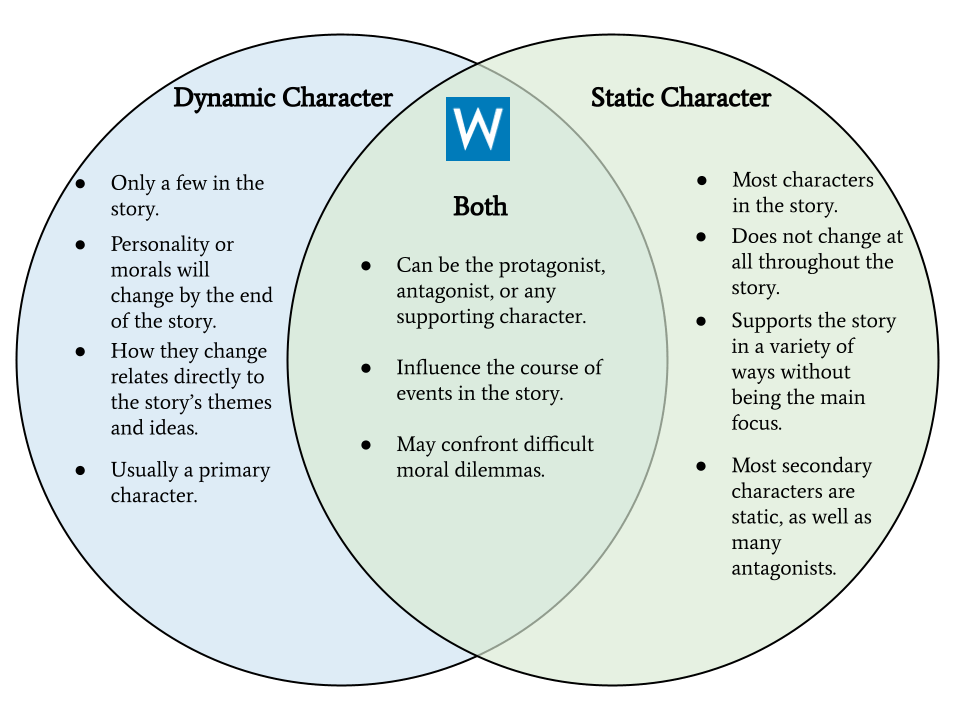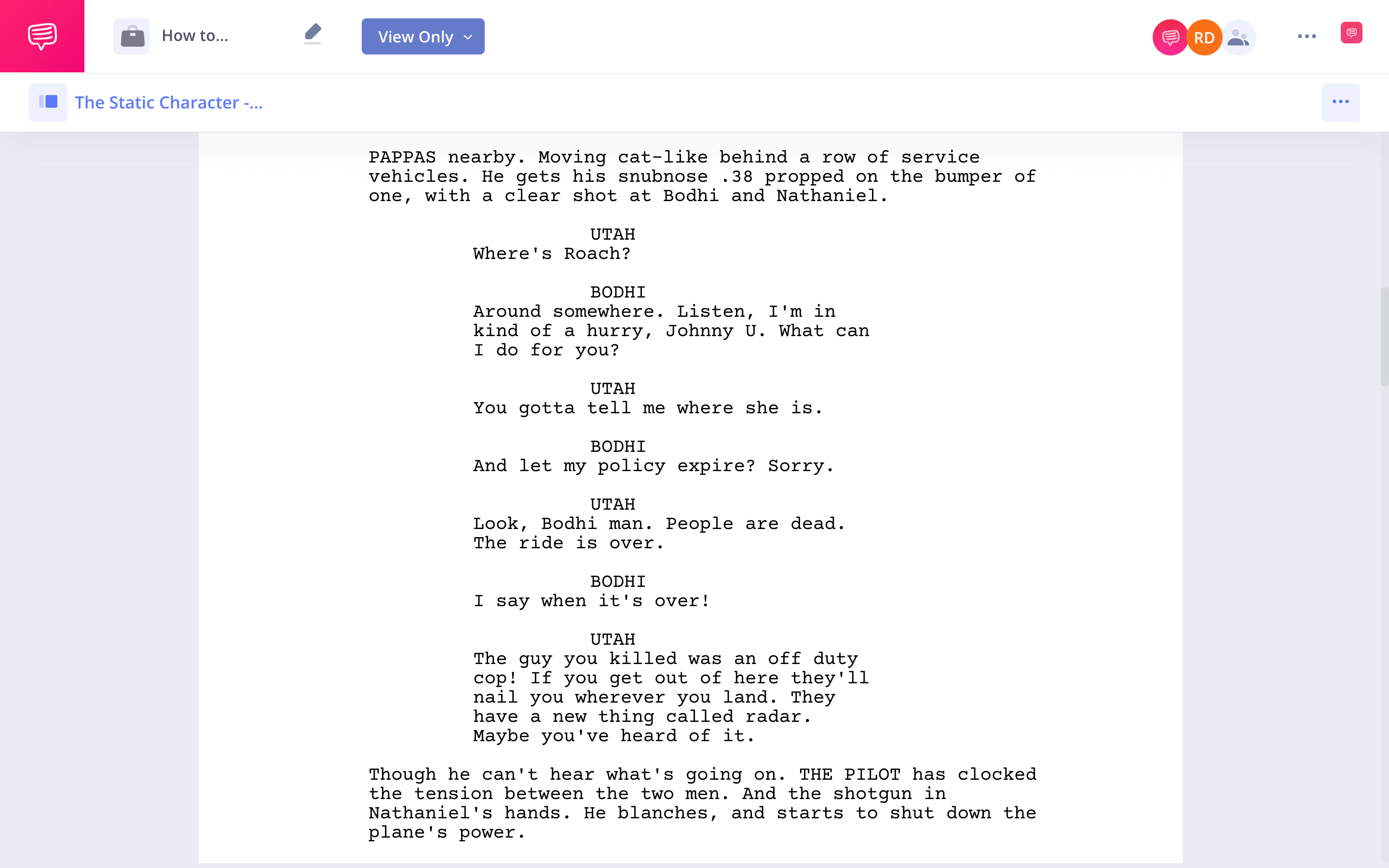All too often, the term “static character” carries a negative connotation. Some think this implies that a character is boring, overly simple, or even poorly written. However, the complete opposite can be true. Some of cinema’s most memorable characters are also static characters such as The Dude from The Big Lebowski, Anton Chigurh from No Country for Old Men, and Captain America from the MCU.
What is a static character and why are they important? In this article, we’ll define static character as well as how they are different from other types of characters and how they function within a story.
What is a Static Character in Storytelling?
First, let’s define static character
Static characters may sound self explanatory, but there is a lot more to them than you might think. Before we dive deep, let’s get a solid understanding of the term by looking at the static character definition.
STATIC CHARACTER DEFINITION
What is a static character?
A static character is a character that does not undergo any significant internal change over the course of a story. Throughout a story, a static character largely remains the same and does not grow or develop in a substantial way.
Static characters are not necessarily simplistic, one dimensional, or flat. In fact, static characters can be rather complex, yet are defined as static because of their lack of change over the course of a story’s plot.
Static characters examples in film and literature:
- Romeo from Romeo and Juliet
- The Dude from The Big Lebowski
- Captain Hook from Peter Pan
How to Define Static Character Elements
Elements of a Static Character
Static characters remain unchanged throughout a story. But there are a few ways this manifests itself throughout the story’s plot. What is a static character defined by?
The most obvious element of a static character is that they are the same in the beginning of the story as they are in the end. The static character’s beliefs, motivations, and principles all remain unchanged at the end of the story.
Think, again, of Captain America. Throughout the course of various MCU movies, Cap has fought bad guys and been through the wringer, but largely Cap’s beliefs and principles remain the same in protecting the greater good.

Captain America • Static Character examples
Like Captain America, other static characters will also have the same ambition or motivation throughout the entirety of the film. Static characters remain unchanged by both their environment and other characters.
This element of static characters is often used to portray characters as stubborn, dedicated, or sound depending on the role of the character in the story. To better understand the static character and how they differ from other characters, let’s analyze its counterpart — the dynamic character.
What is a Static Character in Storytelling?
Static vs dynamic character
The opposite of a static character is a dynamic character. Like we discussed in the definition, a static character does not undergo significant change over the course of a story.
For example, in Romeo and Juliet by Shakespeare, the character Romeo is emotional and rather impulsive. Not only do these characteristics of Romeo go unchanged throughout the story, they ultimately lead to his downfall. Because of this, Romeo is a static character.
This diagram does a great job at illustrating what these character types have in common and what makes them unique.
Static vs dynamic character
A dynamic character, however, is a character who does undergo internal change over the course of a story. This change can be extreme or subtle, but it should be apparent to the audience. Oftentimes, the change in a dynamic character is important to the story’s plot or themes.
This video by Viral Thoughts further defines the differences between a dynamic and static character.
Static vs dynamic character breakdown
As mentioned in the video, a static character is not necessarily a bad character or overly simple character. There are many examples of great protagonists that are also a static character such as Captain America or Sherlock Holmes.
Understanding the difference between a static character and dynamic character is important for any writer looking to create memorable characters. It’s important to understand each so that you can use the strengths of each type of character to your advantage.
What is a static character defined by?
Static Character vs. Flat Character
Static characters are all too often mixed up with a flat character. While some characters can be both static and flat, it’s important to understand the distinct difference between the two.
Again, a static character is defined as a character who undergoes no significant change throughout a story. A flat character, however, is a character that lacks complexity and has a one-dimensional personality. Flat characters typically stem from a stereotypical character. They can often be described in just a few words such as “jock,” “boss,” or “bully.”

Flat character in Dazed and Confused
Most flat characters are also static characters because flat characters do not undergo a character arc. However, not all static characters are flat characters. Static characters can remain unchanged throughout a story, but at the same time be complex, round, and three-dimensional.
Understanding the difference between a static character and a flat character will help you, as a writer, utilize the strengths of each.
What is a static character defined by?
Static Character Examples
So now that we know what a static character is, and isn’t, let’s look at why you may want to use a static character.
The Tragic Flaw
Static characters are ideal for tragic flaws (also referred to as hamartia). Essentially, this is a character’s shortcoming that proves to be their downfall.
A tragic flaw needs a static character — if they weren’t static, they would fix the flaw. Think of Tommy from Goodfellas.
His penchant for flying off the handle results in the mafia routinely having to clean up after him. He never changes despite several warnings, and ends up — spoiler alert — getting whacked.
Tommy’s hamartia gets him killed • Static character meaning
The Unrelenting Antagonist
Many great antagonists are static. The unrelenting antagonist just can’t, or won’t, change.
A classic example of this type of static antagonist is Bodhi from Point Break. His stubborn search for the ultimate adrenaline rush doesn’t waver throughout the film.
His static nature is distilled in the final act. Check out this scene, which we imported into StudioBinder’s screenwriting software:
Point Break’s static character • What does static character mean?
W. Peter Iliff’s dialogue here encapsulates Bodhi’s character. Utah is trying to get through to Bodhi, begging him to realize that his scheme has gone too far. But Bodhi can’t: “I say when it’s over!”
Kathryn Bigelow expertly directs the scene, emphasizing Bodhi’s emotional state. It’s almost as though he’s trapped by his own mission.
It’s great stuff, and made possible by a static character.
The Moral Compass
Sometimes, you need a character who represents the side of good. No matter how messed up the world gets, they stand resolutely and do what’s right. Think of Captain America.
This type of character often informs the themes of a film.
In To Kill a Mockingbird, Atticus Finch’s static goodness highlights the moral depravity of racism.
Atticus Finch is an upstanding static character • Literary definition of static character
The Foil Character
A foil is a character who highlights attributes of a protagonist. In the case of a static foil character, they can provide a contrast to the dynamic protagonist, who learns from their mistakes.
In this way, Bodhi from Point Break also acts as Utah’s foil. Utah is all for pushing the envelope, but Bodhi’s actions highlight that Utah is actually able to draw a line.
Static characters are mistakenly perceived as bad or poorly written characters. However, with a solid understanding of what defines a static character, they can be deeply profound and carry an entire story.
Up Next
What is a Flat Character?
Interested in learning more about the flat character and how they can be an asset to a story? Read our next article where we dive into what defines a flat character and the various functions a flat character can have.


